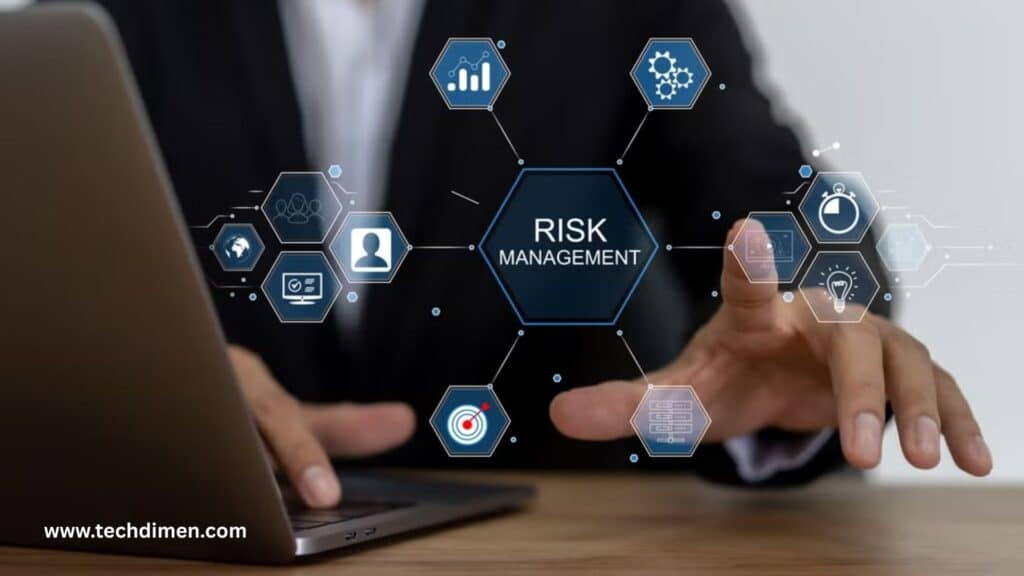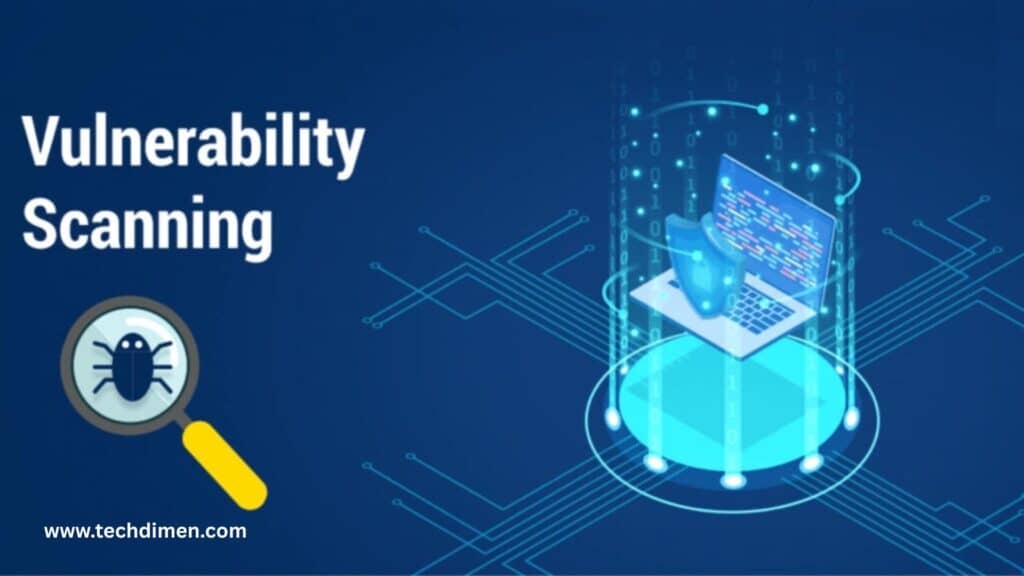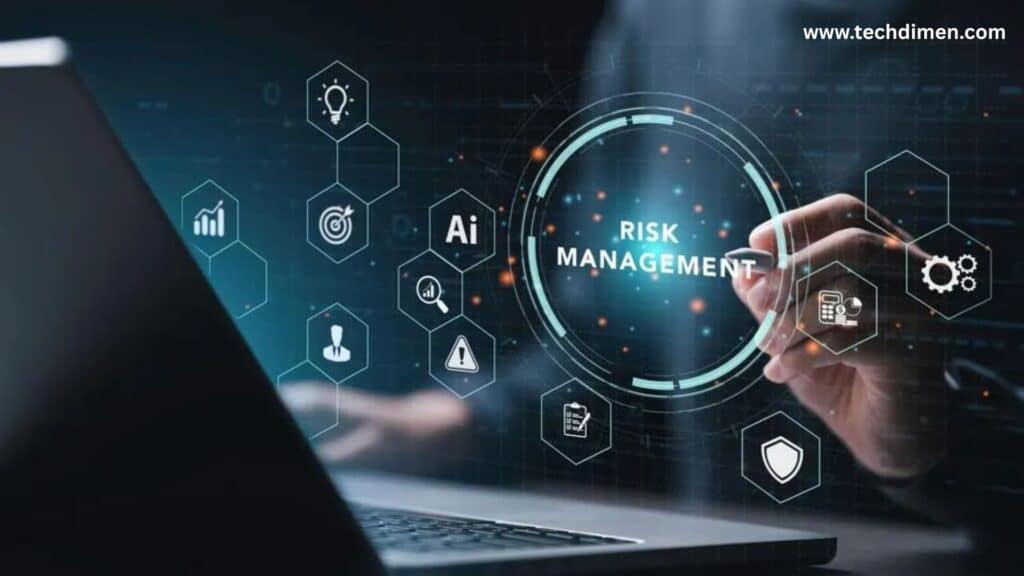In an era where digital transformation is reshaping industries, the role of a Technology Risk Manager has become pivotal. These professionals are at the forefront of safeguarding organizations against technological threats, ensuring compliance, and maintaining operational resilience. This guide delves into the multifaceted responsibilities, requisite skills, tools, and career prospects associated with technology risk management in 2025.
the Role of a Technology Risk Manager
A Technology Risk Manager is tasked with identifying, assessing, and mitigating risks that could compromise an organization’s information technology systems. Their responsibilities encompass developing risk management policies, ensuring compliance with regulations, and implementing strategies to protect digital assets. According to , these professionals play a crucial role in maintaining the integrity and security of IT infrastructures.
Essential Skills and Qualifications
To excel in this role, a combination of technical expertise and soft skills is essential. Proficiency in cybersecurity fundamentals, familiarity with Governance, Risk, and Compliance (GRC) tools, and knowledge of risk frameworks like ISO 27001, NIST, and COBIT are critical. Additionally, strong analytical thinking, effective communication, and decisive decision-making are paramount. Certifications such as CRISC, CISSP, and CISA further enhance a candidate’s profile.
Tools and Technologies in Technology Risk Management

Modern Technology Risk Managers leverage various tools to streamline risk assessment and compliance processes. Platforms like MetricStream, IBM OpenPages, and SAP GRC offer integrated solutions for risk management. These tools facilitate automated compliance monitoring, incident reporting, and performance analytics, enabling organizations to proactively address potential threats.
Governance, Risk, and Compliance (GRC) Platforms
GRC platforms are foundational tools that help organizations integrate risk management with governance and compliance activities. These systems centralize risk assessments, policy management, control testing, and audit tracking. Common GRC tools include RSA Archer, ServiceNow GRC, MetricStream, and LogicGate. They provide dashboards for risk visualization, automate workflows, and ensure consistent documentation across the enterprise.
Risk Assessment and Quantification Tools
These tools are used to evaluate the likelihood and impact of various risks and support both qualitative and quantitative analysis. FAIR (Factor Analysis of Information Risk) is a popular methodology for quantifying cyber and IT risks in financial terms. Tools like RiskLens, which is based on FAIR, help risk managers translate complex technical risks into business-friendly metrics, facilitating better decision-making.
Vulnerability Management Tools

Vulnerability scanners identify weaknesses in software, hardware, and network systems that could be exploited by attackers. Tools such as Qualys, Nessus, and Rapid7 InsightVM scan IT environments to discover misconfigurations, outdated software, or missing patches. These tools often integrate with ticketing systems to help track remediation efforts and compliance with internal SLAs.
Security Information and Event Management (SIEM) Systems
SIEM systems collect, correlate, and analyze security data from various sources across the network. They provide real-time alerts, trend analysis, and compliance reporting. Splunk, IBM QRadar, Microsoft Sentinel, and LogRhythm are commonly used SIEM platforms. For a Technology Risk Manager, these tools are crucial for monitoring risks, identifying incidents, and understanding systemic vulnerabilities over time.
Identity and Access Management (IAM) Tools
IAM tools manage user access to systems and ensure that only authorized individuals have access to sensitive information. Platforms like Okta, SailPoint, and Microsoft Entra ID (formerly Azure AD) allow organizations to enforce least-privilege access, conduct access reviews, and maintain audit trails. These technologies are essential for reducing insider threats and ensuring compliance with data protection regulations.
Cloud Security and Risk Monitoring Tools
With the growing adoption of cloud platforms, managing cloud-related risks has become a top priority. Tools like Prisma Cloud, Wiz, and Microsoft Defender for Cloud help monitor cloud infrastructure for misconfigurations, insecure permissions, and compliance violations. These tools provide continuous visibility across public, private, and hybrid cloud environments.
Data Loss Prevention (DLP) Solutions
DLP tools help prevent the unauthorized transmission of sensitive data outside the organization. These technologies monitor data in motion, at rest, and in use. Products like Symantec DLP, McAfee Total Protection for DLP, and Microsoft Purview help reduce risks of data breaches, insider threats, and regulatory violations by enforcing data handling policies.
Business Continuity and Disaster Recovery (BC/DR) Tools
Technology risk managers also rely on BC/DR tools to ensure that systems can recover quickly after a disruption. Solutions like Zerto, Veeam, and IBM Resiliency Orchestration help automate recovery workflows, perform backups, and simulate disaster scenarios. These tools support operational resilience planning and regulatory readiness.
Audit and Compliance Monitoring Tools
Audit tools help track internal controls, monitor compliance with policies and standards, and generate audit-ready reports. Software such as AuditBoard, TeamMate, and Galvanize HighBond audit planning, issue tracking, and documentation, reducing the manual effort involved in compliance reporting and oversight.
Artificial Intelligence and Machine Learning (AI/ML) in Risk Management
Advanced AI-driven platforms are increasingly used to predict risk trends, detect anomalies, and automate decision-making., machine learning models are embedded in many SIEM and threat detection tools to improve accuracy and reduce false positives.
Career Path and Progression
Embarking on a career as a Technology Risk Manager offers diverse advancement opportunities. Entry-level positions such as IT Auditor or Security Analyst can lead to mid-level roles like IT Risk Analyst or Compliance Officer. With experience, professionals can ascend to senior positions.
As of 2025, the average annual salary for a Technology Risk Manager in the United States is approximately $128,671, with variations based on experience, location, and industry. Top earners in this field can command salaries upwards of $150,000, reflecting the critical nature of their role in safeguarding organizational assets.
Challenges in Technology Risk Management
The evolving threat landscape demands continuous learning to stay ahead of emerging cyber threats. Adapting to new compliance requirements and ensuring cross-departmental coordination for risk policies necessitates effective collaboration.
Real World Applications and Case Studies
In the financial sector, a leading bank implemented a robust GRC platform to manage third-party risks. By integrating vendor assessments and compliance checks, they reduced potential data breach incidents by 40%. In the healthcare industry, a hospital network adopted ISO 27001 standards, enhancing their data protection measures.
Emerging Trends in Technology Risk Management
The field is continually evolving, with several trends shaping its future. Artificial Intelligence (AI) and Machine Learning (ML) are being leveraged for predictive risk analysis and anomaly detection. The implementation of Zero Trust Architecture is gaining traction, emphasizing strict access controls. Cloud security is becoming a focal point, with organizations focusing on securing cloud-based infrastructures and services.
Resources for Aspiring Technology Risk Managers
For those interested in pursuing a career in technology risk management, various resources are available. Online platforms like Coursera and Udemy offer courses on risk management and cybersecurity. Joining professional organizations like ISACA can offer networking and learning opportunities.
FAQs:
What does a Technology Risk Manager do?
A Technology Risk Manager is responsible for identifying, assessing, mitigating, and monitoring risks related to information technology within an organization. They ensure that the company’s technology infrastructure, systems, and processes are secure, compliant, and resilient against potential threats, such as cyberattacks, data breaches, system failures, and regulatory non-compliance.
Why is technology risk management important?
Technology risk management is essential because organizations rely heavily on digital systems. A failure or breach in these systems can lead to financial loss, legal implications, reputational damage, and operational disruption. Managing these risks proactively helps ensure business continuity, data protection, and compliance with legal and regulatory requirements.
What are the key responsibilities of a Technology Risk Manager?
The key responsibilities include conducting risk assessments, developing and enforcing IT risk management frameworks, collaborating with cybersecurity teams, ensuring regulatory compliance leadership, and designing response strategies for identified risks.
What tools and frameworks are commonly used in this role?
Common tools and frameworks include NIST Cybersecurity Framework, ISO/IEC 27001, COBIT, FAIR (Factor Analysis of Information Risk), GRC platforms like Archer or ServiceNow, and security tools like Splunk, Qualys, or Nessus for risk monitoring and assessment.
How does a Technology Risk Manager collaborate with other departments?
A Technology Risk Manager works closely with IT, cybersecurity, compliance, audit, legal, and business units. They provide guidance on risk controls during system implementations, review vendor risks with procurement teams, and share insights with executive leadership through reports and risk dashboards.
What skills are required to succeed as a Technology Risk Manager?
Strong analytical skills, a deep understanding of IT systems and security practices, knowledge of risk frameworks and compliance standards, communication and leadership abilities, and project management expertise are critical to succeed in this role.
How do you measure technology risk?
Technology risk is measured through qualitative and quantitative assessments, including risk scoring, heat maps, likelihood-impact matrices, and metrics such as incident frequency, time to resolve, compliance gaps, and audit findings. These measurements help prioritize risks and guide mitigation strategies.
What are common challenges in technology risk management?
Common challenges include keeping up with emerging threats, aligning IT risk with business goals, managing third-party risks, achieving consistent compliance, and securing executive buy-in for risk mitigation investments.
How often should technology risk assessments be conducted?
Risk assessments should be conducted regularly, typically annually, and whenever there is a significant change in technology, such as new systems, software upgrades, cloud migration, or mergers and acquisitions. Continuous monitoring tools can help maintain a real-time view of risk.
What is the difference between a Technology Risk Manager and a Cybersecurity Manager?
While both roles aim to protect the organization’s digital assets, a Technology Risk Manager focuses broadly on all IT-related risks includingn compliance, operational failures, and third-party risk whereas a Cybersecurity Manager primarily focuses on protecting systems from malicious threats like hacking, malware, and phishing.
Conclusion
The role of a Technology Risk Manager is integral in today’s digital-centric world. With the right skills, tools, and mindset, professionals can navigate the complexities of technology risks, ensuring organizational resilience and compliance. As technology continues to evolve, the demand for skilled risk managers is poised to grow, making it a promising career path for those interested in the intersection of technology and risk management.

Jhon AJS is a tech enthusiast and author at Tech Dimen, where he explores the latest trends in technology and TV dimensions. With a passion for simplifying complex topics, Jhon aims to make tech accessible and engaging for readers of all levels.







